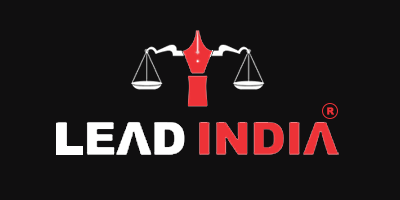A vendor contract (also known as a vendor agreement) is a business agreement between two parties that governs the exchange of goods or services in exchange for compensation. Vendor contracts specify the terms of the commercial connection and each party’s contractual duties.
What is the purpose of a vendor agreement?
A vendor contract’s purpose is to guarantee that all parties involved in a product transaction understand what is expected in terms of deliveries, payment, or services, as well as the repercussions if such expectations are not satisfied. Companies can also reduce risks by drafting vendor contracts at the start of each business/vendor partnership.
Need A Legal Advice
The internet is not a lawyer and neither are you. Talk to a real lawyer about your legal issue

The significance of vendor agreements in India
- Clearly Defined Expectations: A vendor agreement can assist both parties in establishing their expectations. This covers the goods or services to be given, the dates, payment arrangements, and any other pertinent information. A well-defined agreement ensures that there is no confusion or misinterpretation among the participants.
- Protects Intellectual Property: If a vendor is going to create or use any intellectual property during their engagement, the vendor agreement should clarify ownership and usage rights. This contributes to the protection of the business and vendor’s intellectual property rights.
- Ensures Compliance with Local rules: In India, vendor agreements must conform to local rules and regulations such as the Indian Contract Act of 1872, the Sale of Goods Act of 1930, and the Consumer Protection Act of 2019. A well-drafted agreement guarantees that both the firm and the vendor comply with local legislation.
- Mitigates Risks: Risks are mitigated by including language in a vendor agreement that safeguards both parties from any losses or damages coming from the engagement. This includes indemnification provisions, which shield the company from any losses or damages incurred by the vendor.
Draft Vendor Agreements
- Identify your objectives: Before you begin negotiating with a vendor, you should have a clear notion of what you hope to achieve from the transaction. What are your goals, priorities, and requirements? What are the dangers and challenges? How will you evaluate the vendor’s performance and accountability? How will you deal with changes, disagreements, and termination? Having a clear picture of your goals will allow you to successfully articulate them and connect them with the vendor’s talents and interests.
- Investigate the vendor: The next step is to conduct background research on the vendor you are considering. What about their market reputation, experience, and track record? What are their key strengths, limitations, and competitive advantages? How do they work, communicate, and deliver? What are their beliefs, culture, and expectations? Doing your research will allow you to examine the vendor’s acceptability, dependability, and fit with your company.
- Negotiate the terms: Once you’ve chosen a vendor and developed rapport, you may begin discussing the contract conditions. This is where you talk about the scope, deliverables, timetables, costs, payment methods, warranties, obligations, and other terms that will govern your relationship. You should aim for a win-win situation in which your requirements and interests are balanced with those of the vendor. You should also be willing to compromise, address concerns, and handle problems that may develop during the negotiation process.
- Create the contract: After you’ve achieved a verbal agreement with the seller, you must put the contract in writing. You can use a template or hire a lawyer to assist you with the contract’s format and language. You should ensure that the contract includes the terms and conditions that you negotiated and agreed on. You should also look for any flaws, contradictions, or ambiguities that could lead to future confusion or disagreements. You should also send any attachments, appendices, or exhibits that help or clarify the contract.
- Reviewing and signing the contract: The final step is to read and sign the contract. You should carefully read the contract to ensure that you understand and agree to everything mentioned. You should also ask the vendor to do the same and address any questions or concerns they may have. If you require legal or technical guidance, you should speak with a lawyer or an expert. Once you’re happy with the contract, you and the vendor can sign and exchange copies. You should maintain a copy of the contract for your records and future reference.
The benefit of vendors agreement
Drafting a Vendor’s agreement has many benefits. Vendor agreements provide a standardized framework for all parties involved. This framework covers critical features such as security regulations, financial arrangements, and conflict resolution methods. Vendor agreements are important for risk management because they specifically outline the rights, liabilities, and governing laws and regulations within the agreement. Parties can identify and mitigate a variety of hazards that may develop during their commercial partnership.
Lead India offers various legal services, such as free legal advice and internet information. We provide a facility in which you can talk to a lawyer and ask legal questions regarding the law here. Lead India’s lawyers can assist you with any legal issues. In India, Lead India provides free legal assistance online. In addition to receiving free legal advice online, Lead India allows users to pose inquiries to experts for free.





 Talk to a Lawyer
Talk to a Lawyer